Search Images
Browse Content (p. 1371)
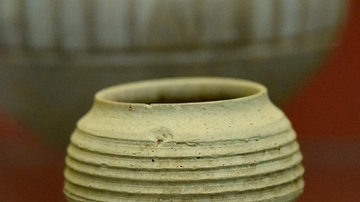
Image
Pottery Cup from Ninevite V Incised Period
This pottery cup was wheel-made and unpainted. It has a pointed base. Excavated by Robin Hamilton and Reginald Thompson in 1930-1931 season. Ninevite 5 period, 2750-2500 BCE. From Nineveh, northern Mesopotamia, modern-day Iraq. (The British...
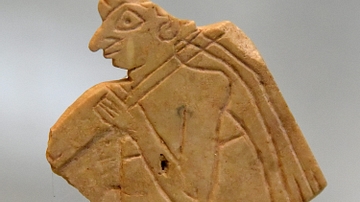
Image
Sumerian Man Holding a Pole
This fragment of a stone inlay was found in Kish. It depicts an incised design of a man wearing the typical Sumerian long robe, carrying a pole on his shoulder. This is probably from a battle scene. The overall depiction of this man is very...
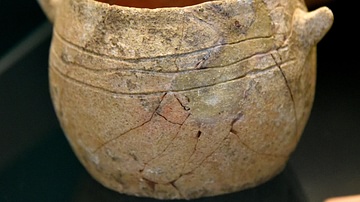
Image
Bowl from Tiwal esh-Sharqi
This bowl was found in Tiwal esh-Sharqi, Jordan Valley. EBIV, 2400-2000 BCE. (The British Museum, London).
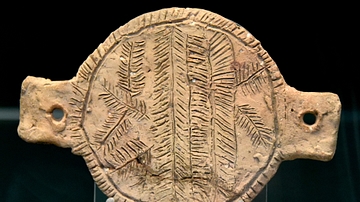
Image
Censer Lid from Lachish
Pottery censer lid. Early alphabetic inscription on reverse. The Late Bronze Age at Lachish. (The British Museum, London).
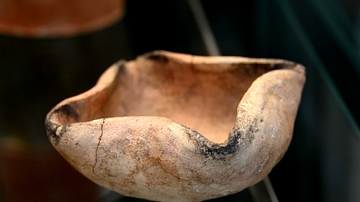
Image
Lamp from Tiwal esh-Sharqi
The usual lamp from this period has four spouts. From analyses, it has been possible to identify the fuel used as fish oil. EBIV, 2400-2000 BCE. From Tiwal esh-Sharqi, Jordan Valley. (The British Museum, London).
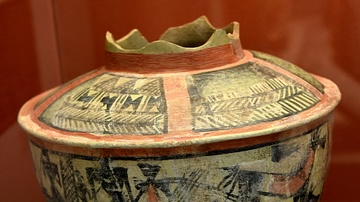
Image
Painted Ceramic Jar From Khafajah
This is an example of a type of decorated pottery known as Scarlet Ware. The painting includes chariot and banquet scene with musicians. One musician plays a bull-headed lyre. The jar is the earliest object so far known to combine these recurrent...
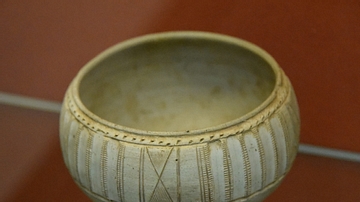
Image
Ninevite V Incised Cup
This pottery cup has a pointed-base and was wheel-made. The surface contains many incised markings typical of Ninevite 5 incised ware. Donated by Hormuzd Rassam. Ninevite 5 period, 2750-2500 BCE. From Nineveh, northern Mesopotamia, modern-day...
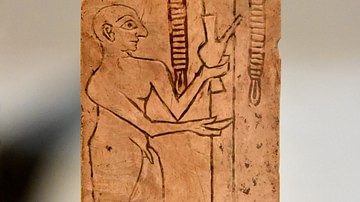
Image
Sumerian Man Offering a Libation
Shell inlay depicting a standing and naked man (ordinary individual or priest) offering a libation. Excavated by Sir Henry Layard for the Department of Antiquities in Iraq. This object was part of the objects allotted to the British Museum...
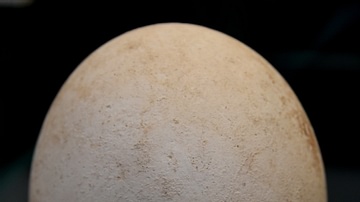
Image
Ostrich Egg from Lachish
Ostriches were native to the Levant, and their eggs, plain or decorated, were often included in tombs deposits. MBIIB-C, 1750-1550 BCE. From Lachish, modern-day Israel. (The British Museum, London).
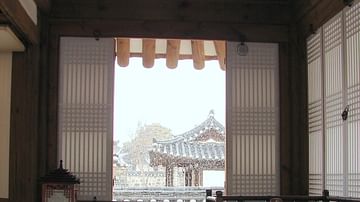
Image
Hanok Interior
An interior room of a traditional Korean home in the hanok style of Korean architecture. (Namsangol Hanok Village, Seoul, South Korea)